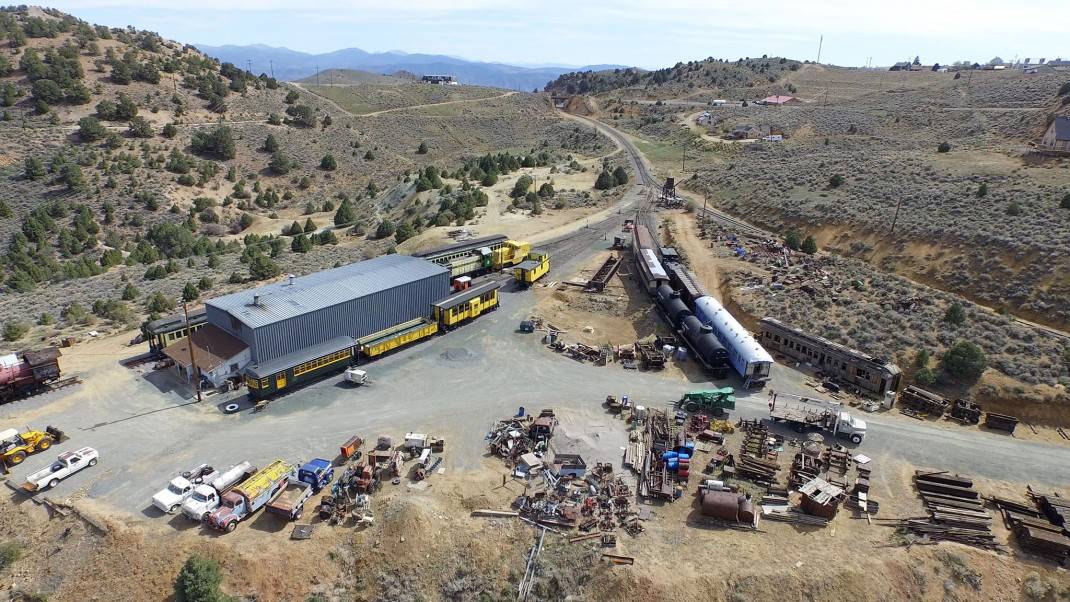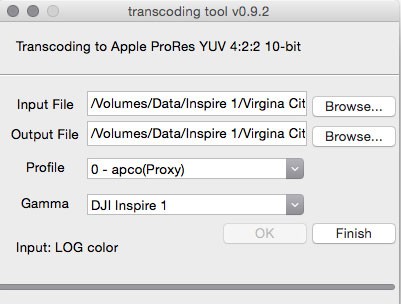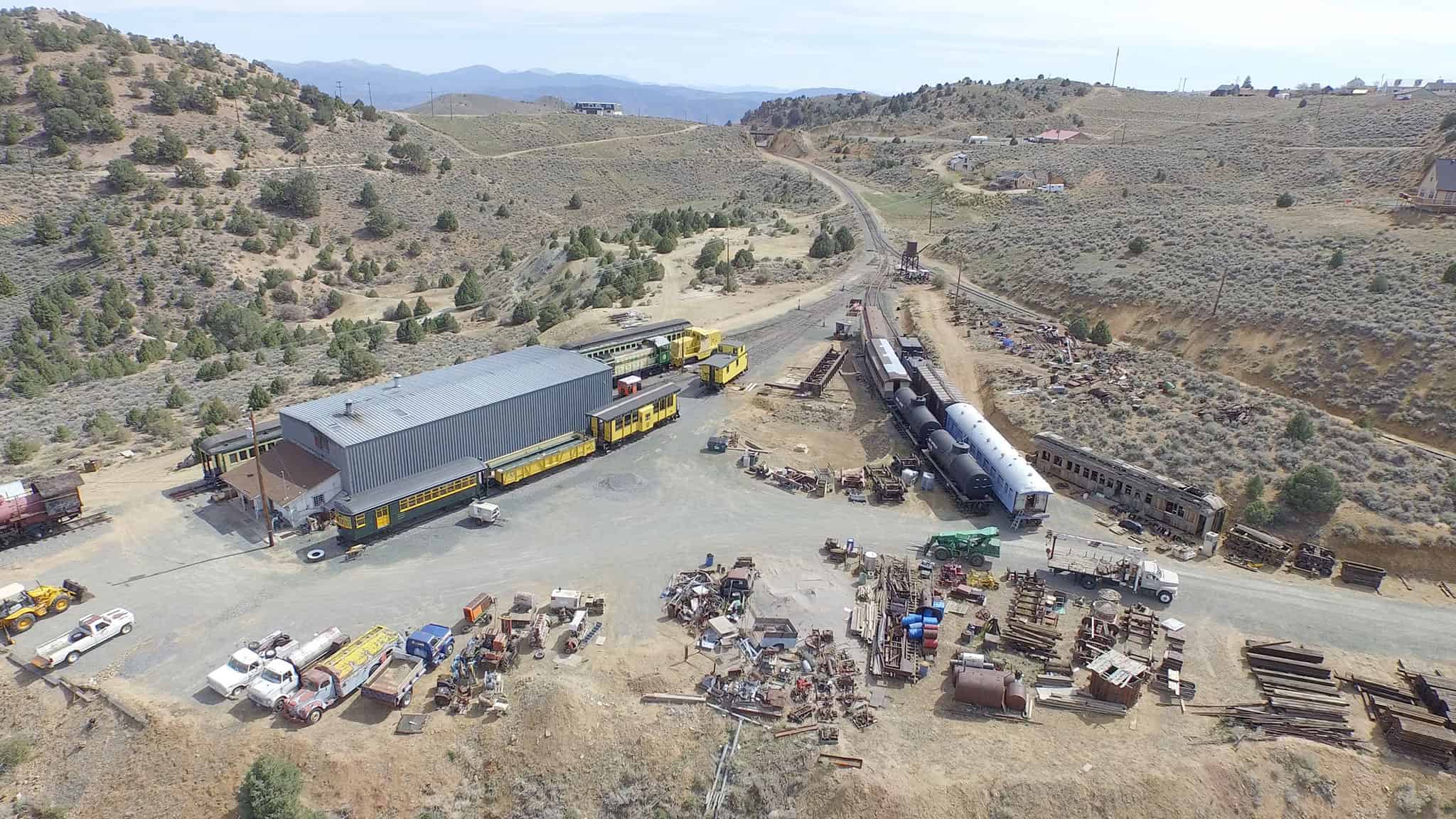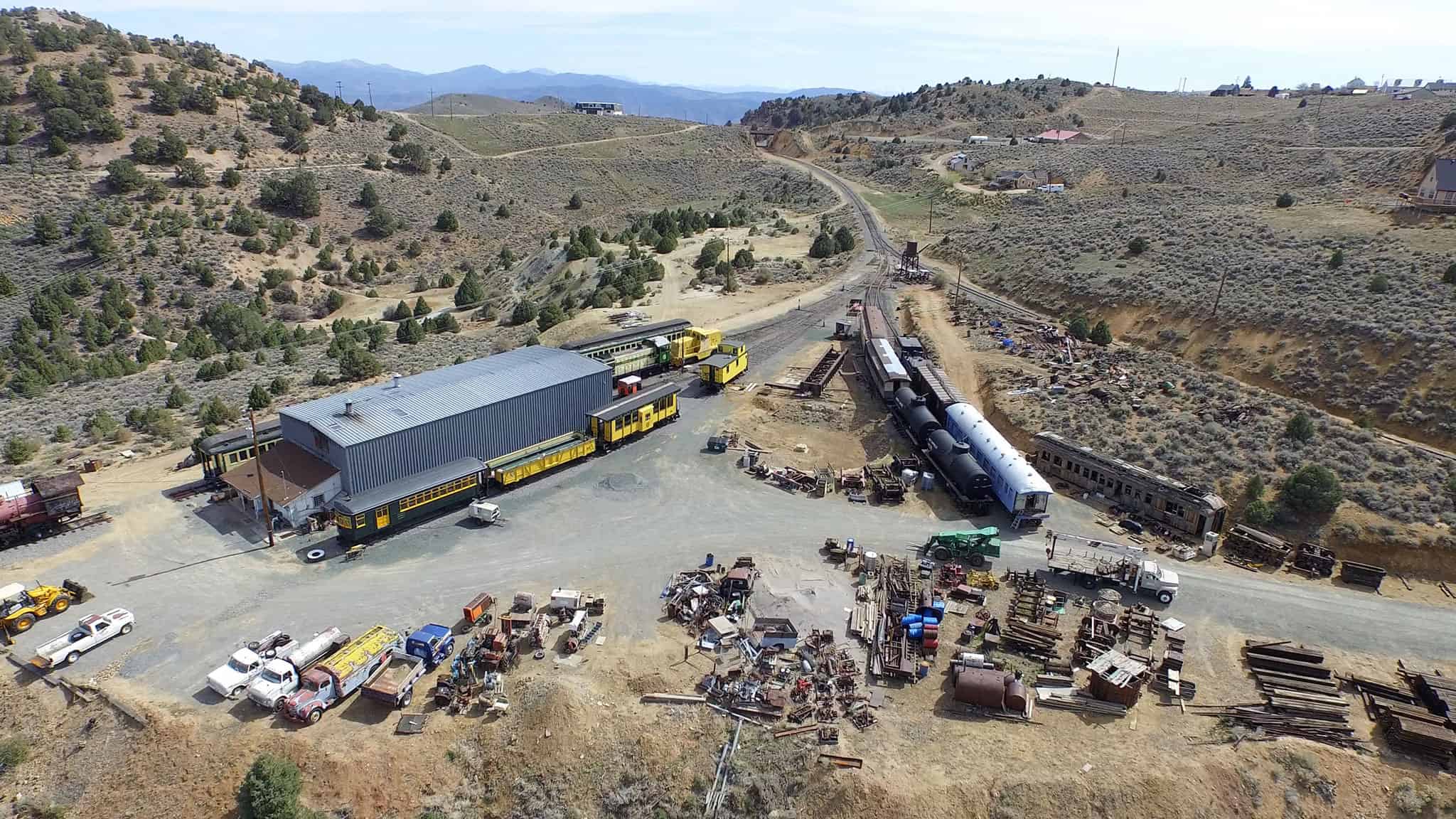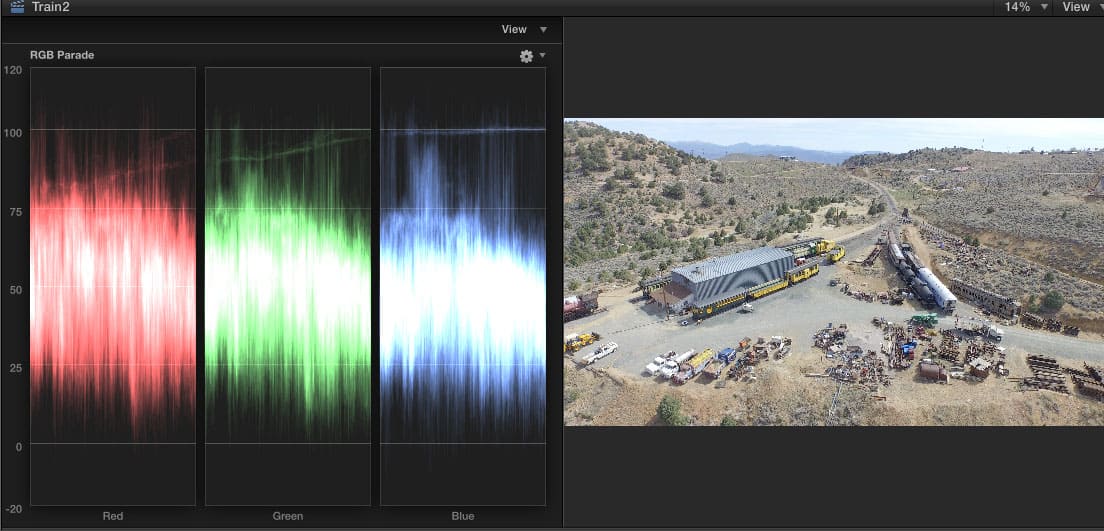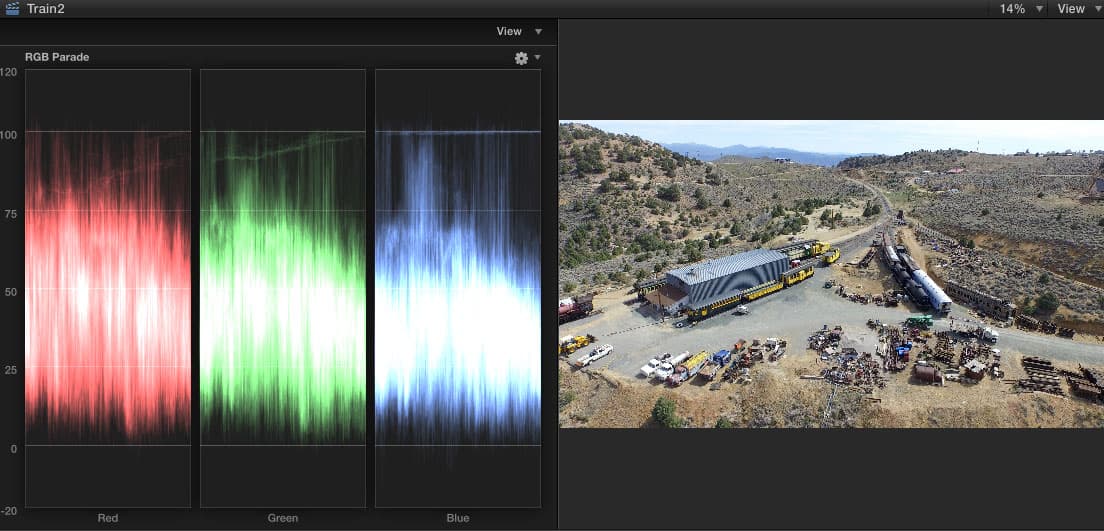I have been playing around with my Inspire 1 from DJI recently and testing various video settings and conversion tools to get the best quality that I can then pass off to post for more color correction.
I have read many blogs and watched a lot of videos where people recommend to shoot in Log mode which can be found in the Pilot app under Fn button, then select Color and you will see an option for LOG mode. If you want more of a technical explanation of LOG format please visit this page here.
I also stumbled across the DJI transcoder which transcodes the inspire 1 video format (DJI AVC) into Apple ProRes YUV 4:2:2 10 bit.
ProRes is a line of intermediate codecs, which means they are intended for use during video editing, and not for practical end-user viewing. The benefit of an intermediate codec is that it retains higher quality than end-user codecs while still requiring much less expensive disk systems compared to uncompressed video. It is comparable to Avid’s DNxHD codec or CineForm which offer similar bitrates which are also intended to be used as intermediate codecs. ProRes 422 is a DCT-based[2]intra-frame-only codec and is therefore simpler to decode than distribution-oriented formats like H.264. – Wikipedia Link
So I thought I would test this out with out doing any extra color correction. I took some footage directly from the Inspire 1 from a recent shoot I did in Virginia City, NV and transcoded the clip with the DJI tool which can be found here (see software tools section at the bottom).
Someone recommend these settings so my first test is with the profile set to apco(Proxy) and Gamma to Inspire 1.
This turned my 338meg mp4 file into a 2.56 mov file.
This didnt take long on my power house mac but Ill defiantly need to invest in more hard drives very soon, also just to be clear this is is used just for editing allowing you to adjust more color processing in Adobe Premier Pro or Apple Final Cut X and it not intended to be the end result for viewing.
Move the slider to see the differences.
As you can see the left part of the image is from the original video taking from the Inspire 1, and the right is the transcoded Image that does a nice little job of adding back in some of the colors lost or washed out.
Looking at this in Apple Final Cut Pro X and checking out the RGB Channels from the video you can clearly see that the original video is reaching the color space limitations where you start to get blown our or washed out colors, highlights and beyond.
And here is the transcoded video which tightens up the color space a bit in the allowed color space (depending on what look your going for).
So overall if your not going though this step you might be loosing a bit of data that you can then process while editing how ever be prepared for large files and lots of storage to be used :).
I do not claim to be an expert in this area but know a decent amount about color correction to make me dangerous but I’m just passing this information along for those who may not be away of this work flow and shooting in LOG format with your Inspire 1.
Please feel free to submit comments blow.
UPDATE:
Their is some discussion on Facebook and some other locations as to why you would need to transcode to Apple ProRes and if you really need it since some NLE (None Linear Editors) you can correct the color profile yourself with some tweaks. This is true that you an do this and I found some interesting links to people talking about this and providing some pro’s and cons.
DJI Thread on some of this can be found here.
2 Posts stick out to me the most in this thread and its one from Marty where he does video comparisons of the various modes.
In his post he askes a few key questions which Ill not repost but you get the idea and can make your own decision as to what you want to do. For me I perfer to play around and get the best result out of my footage and if Apple ProRes provides more grading space vs compressed h.264 video from the inspire 1. I want to be clear their seems to be some confusion that the inspire 1 shoots video at RAW this is not true its compressed format of MP4/MOV (MPEG-4 AVC/H.264)at a bitrate of 60Mbps.
DJI-CAO replied to this post with his own info and I believe (I could be wrong) works on the transcoder from DJI which is right underneath the post from Marty which is linked above. However someone else on Youtube also answered one of the questions that might ring very true to most people.
To answer your question #2, by transcoding to ProRes 422, first, you have a codec that is more compatible with certain editors. For example, H.264 does play well with FCP. Another advantage is ProRes is better codec to color grade in. It’s a much bigger container, meaning it has more headroom when you’re pushing colors around. As result, you might get slightly better result, especially if you’re doing heavy grading. If none of the above apply to your workflow, it would be a waste of time and HD space to transcode to ProRes. Why does it use ProRes? It’s an industry standard format. If you ever work with other editors and need to provide RAW files, they might ask for them in ProRes format.
So my take away is depending on your situation you may need to convert to ProRes 422 if your handing this off to a professional service that will be editing your video. If your just messing around and putting together a few clips here and their for your own time you may want to consider using this because it gives you a first level of color correction or if you do not want to waste HD space you can make some adjustments in your editing program which can be small tweaks that give you similar results.

